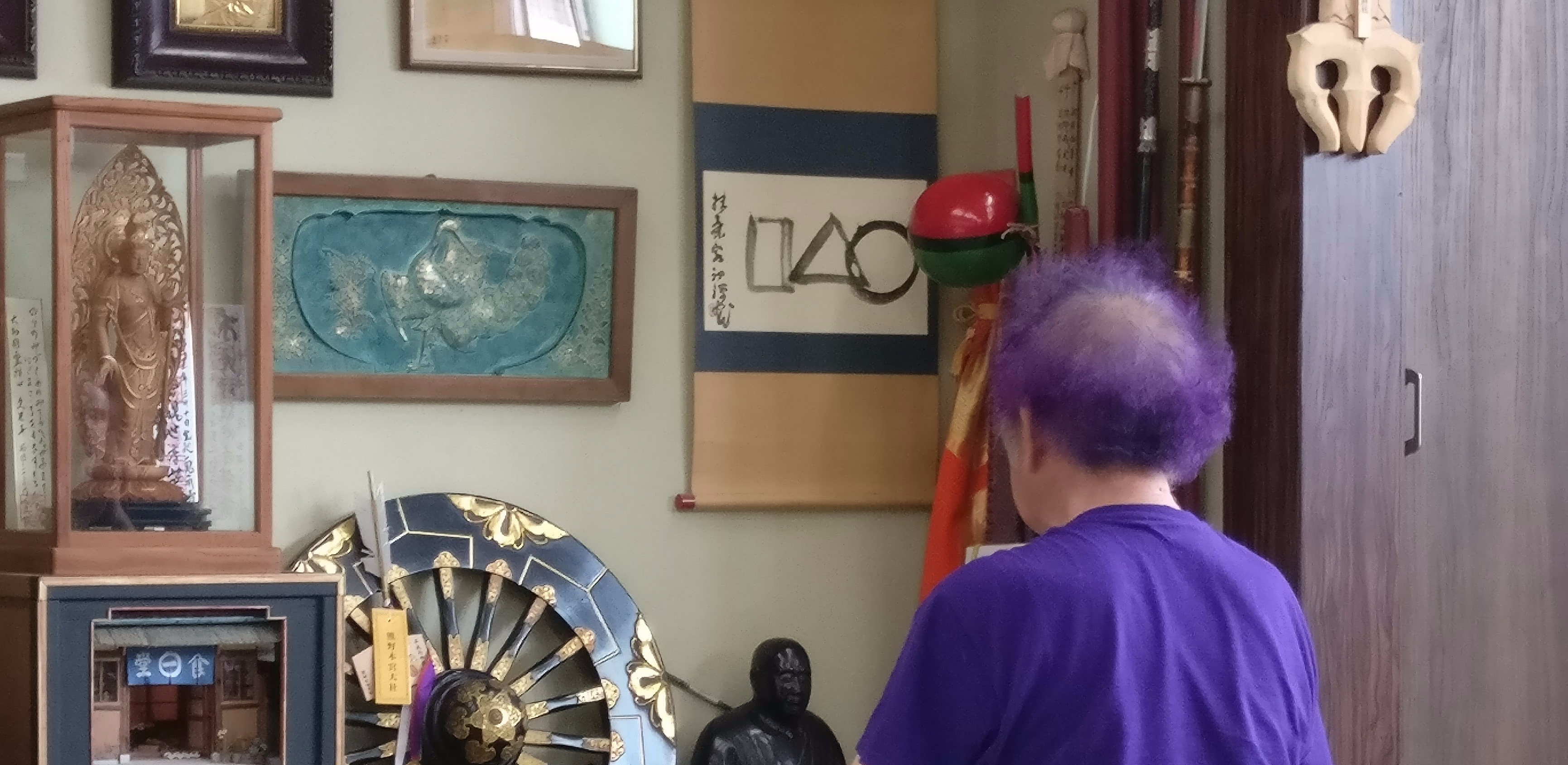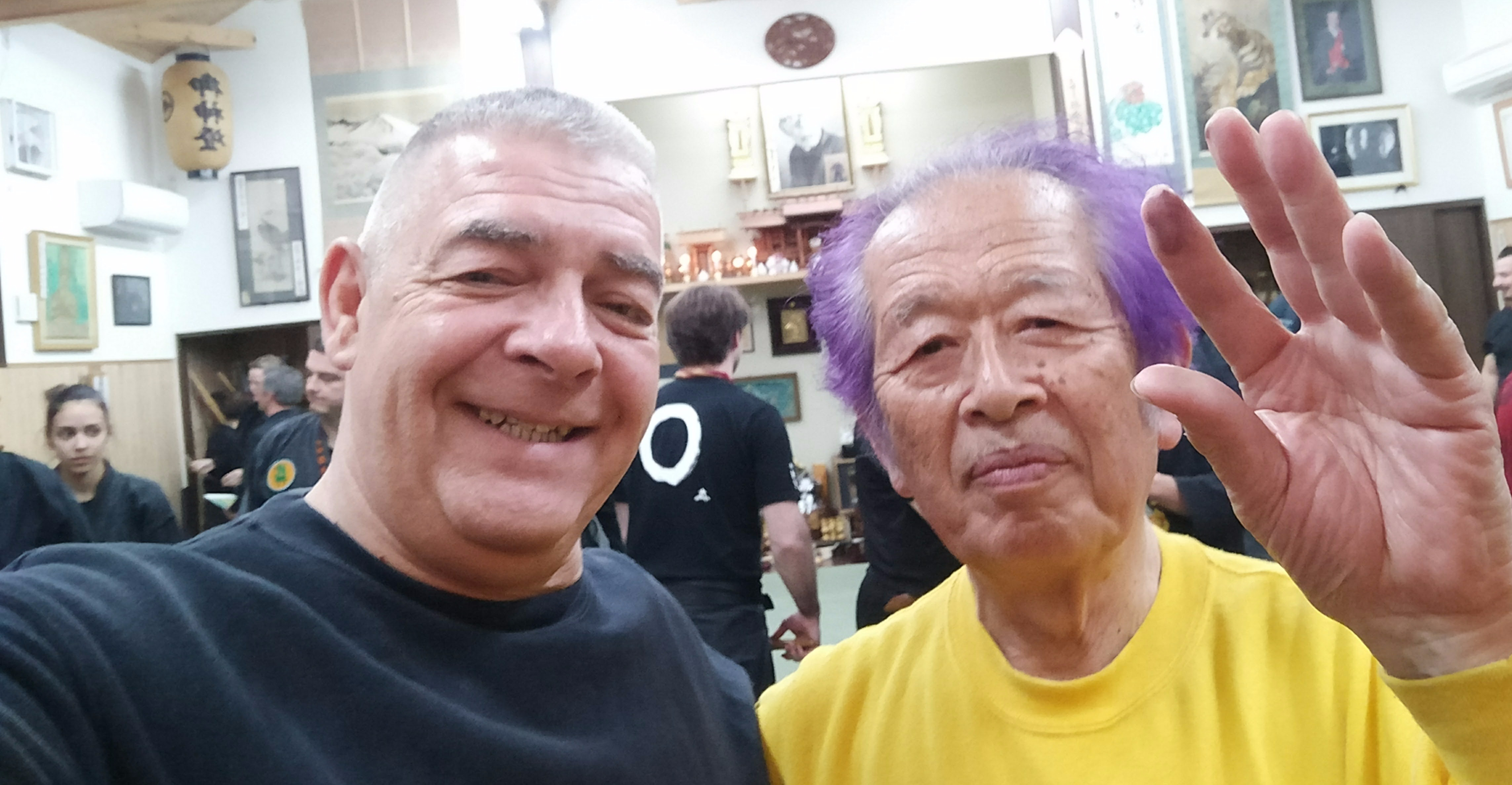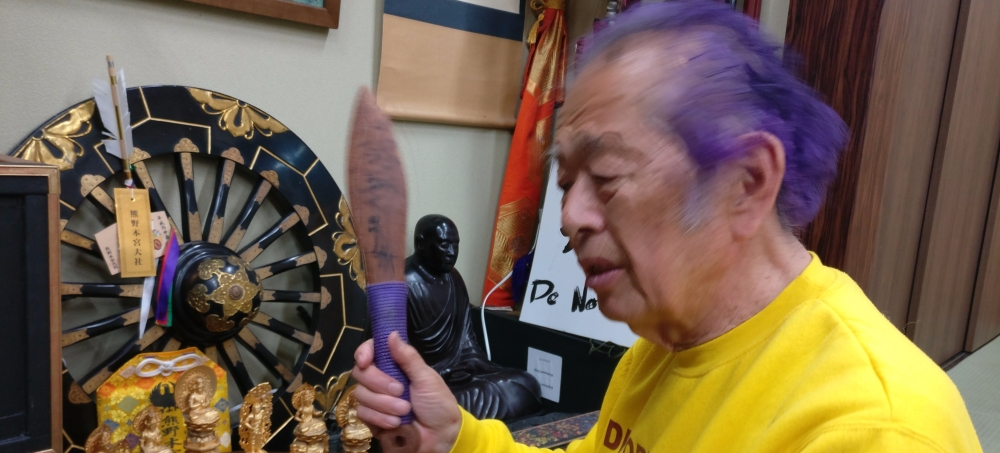Bujinkan Strategies of Control Part 6: 神経 Shinkei
From Bujinkan Santa Monica by Michael
 |
| Ricky, Kiwa, and Michael on our way to the Bujinkan Honbu |
I decided to risk breaking some kind of Japanese formality or etiquette that I was unaware of and invite my friend to train with us today. I hoped that Soke would be happy to meet him. We never know what these connections might bring.
In Hatsumi Sensei’s class everything he taught was about using small points of connection for control. He demonstrated this with with his fingertips. In one moment he slapped the opponent in the eye with his index finger. Then he showed us how to line up the body and the shoulder behind one finger as if it was a sword.
Then you pivot around that point. When you pivot around this small point, you control the opponent’s kamae, his balance, or the point of pain.
Soke said,
“With the fingertips being able to 変えるkaeru. You've got to be able to do this just with your fingers. it's not a technique. you don't really feel like moving much, right?"Soke said he was controlling through connection. Connect to the opponent’s movement, but also what he is thinking and feeling. Once you make that connection you can control him. Control his body, thoughts, and his feelings through this connection.
But he emphasized,
“You’re not controlling one specific point, you’re controlling everything. I said by the fingers, but it’s not really the fingers. It’s about control. It looks like it’s happening at the fingers but it’s actually happening with the whole body.”Soke used the word 神経 shinkei. This is a sensitivity through the nerves.
“Study this way of controlling through connection. Connect with what he's thinking or he's feeling. It's not technique. you have to be connected with him like this. You can't teach this. If you try to avoid, you're going to break that connection.”This is not something you do with your own human intention. Shinkei is instinctual like an autonomic response that your body has if you are sensitive enough.
You use the small parts of your body. To demonstrate Soke began to wiggle his ears and we all laughed. Then he said to take the small things and connect to the big things in the kukan and then use that connection.
This is the correct 空間利用 kukan riyō or use of space. When you connect with a finger, it is a small thing or point. But it connects to a big thing which is the conflict or your opponent’s aggression. You use that small connection (NOT the finger… the connection itself) to control.
Hatsumi Sensei said we create a vacuum and have this “mood.” Soke used a play on words between English ムード muudo and Japanese 無道 mudou or even 武道 budou. You are being led by the martial arts into zero. Going between mood and the way of emptiness or formlessness. We are led by the martial arts into zero and become zero through the martial arts.
During the break, Hatsumi Sensei painted a dragon for my new Japanese friend. Many of our other Japanese Shihan and buyu were very friendly and welcoming to him. Maybe in time he will find his new teacher in the Bujinkan.
UP NEXT: Bujinkan Strategies of Control Part 7: 中心 chuushin
 A week ago, my last class with Sensei for this trip was another great one, with many insights to bring and to train at home.
A week ago, my last class with Sensei for this trip was another great one, with many insights to bring and to train at home. When Hatsumi Sensei saw this statue at his regular antique shop, he took it as a reminder of Takamatsu sensei’s story. For him, this statue placed at the centre of the Shinden symbolises the fact that we (he) have reached the level of Takamatsu sensei’s understanding.
When Hatsumi Sensei saw this statue at his regular antique shop, he took it as a reminder of Takamatsu sensei’s story. For him, this statue placed at the centre of the Shinden symbolises the fact that we (he) have reached the level of Takamatsu sensei’s understanding. Before we did the salute, Sensei facing the Shinden called me to give me a Ōmamori from the Amatsu Tatara. It reads “Amatsu Tatara no Hōken”. Hōken is the treasure sword that protects from sickness and evil. That was a kind attention.
Before we did the salute, Sensei facing the Shinden called me to give me a Ōmamori from the Amatsu Tatara. It reads “Amatsu Tatara no Hōken”. Hōken is the treasure sword that protects from sickness and evil. That was a kind attention.
 強弱柔剛あるベからず
強弱柔剛あるベからず Each class, Hatsumi sensei speaks about moving “Yukkuri”, slow. This is different from training slowly. (1)
Each class, Hatsumi sensei speaks about moving “Yukkuri”, slow. This is different from training slowly. (1) I don’t speak Japanese, but I do my best to pronounce it correctly. Too often, I can see t-shirt written “Gyokko Ryū Koshi Jutsu” instead of “Gyokko Ryū KoSShi Jutsu.” (1)
I don’t speak Japanese, but I do my best to pronounce it correctly. Too often, I can see t-shirt written “Gyokko Ryū Koshi Jutsu” instead of “Gyokko Ryū KoSShi Jutsu.” (1)